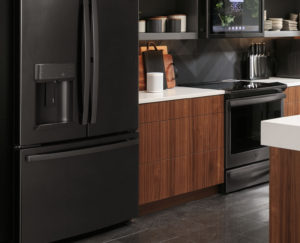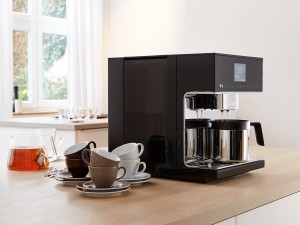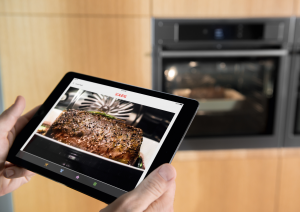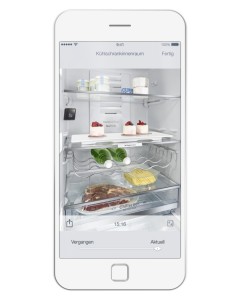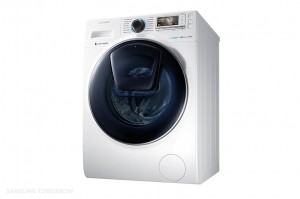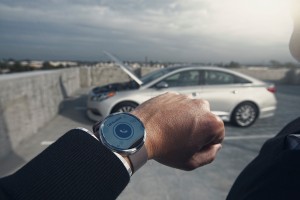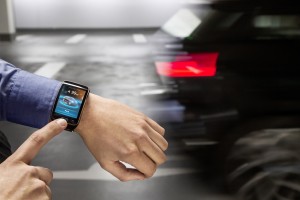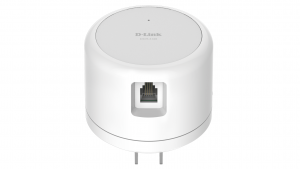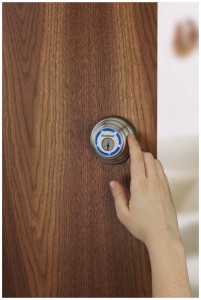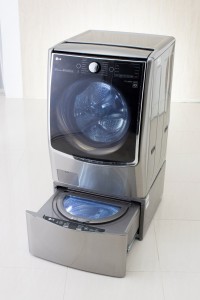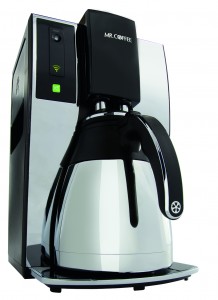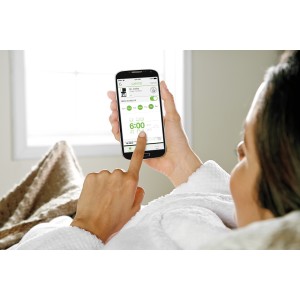The Internet fridge–still considered very mythical
 Since the “dot-com” era of the late 1990s, there has been a very mythical home appliance often cited by Internet visionaries. This is the Internet fridge or “smart fridge” which is a regular household refrigerator equipped with Internet connectivity and a large built-in display.
Since the “dot-com” era of the late 1990s, there has been a very mythical home appliance often cited by Internet visionaries. This is the Internet fridge or “smart fridge” which is a regular household refrigerator equipped with Internet connectivity and a large built-in display.
It is expected to provide access to a wide range of online services like online shopping, online photo albums, email and messaging, and online music services. It is also expected to keep track of the food and drink that is held therein using a simple inventory-management program.
In the context of the smart home, the Internet fridge is expected to be a “dashboard” or “control surface” for lighting. heating and other equipment associated with the home. Often the vision for the smart home is to have as many control surfaces around the home to manage what happens therein like setting up HVAC operating temperatures or turning lighting on and off according to particular usage scenarios.
The Internet-fridge idea is based on the concept of the typical household refrigerator’s door ending up as the noticeboard for that household thanks to its role as the main food-storage location for the people and pets therein. There is the thriving trade in “fridge magnets” that people use to decorate their fridge’s door. Let’s not forget that some households have even put a radio or TV on top of the fridge that they can flick on for information or entertainment in the kitchen.
Who is making these appliances?
At the moment, Samsung and LG are making Internet-fridges in production quantities available to the market. These are typically positioned as American-style wide-format fridges that also have the integrated ice makers. Samsung offers theirs in a few different compartment configurations with the cheapest being a two-door fridge-freezer arrangement.
But most of the other white-goods manufacturers exhibit examples of these Internet fridges at trade fairs primarily as proof-of-concept or prototype designs. These are typically based on common fridge-freezer designs already on the market but are modified with Internet functionality.
But the Internet-fridge idea has not become popular with most people. Why is that so?
One issue is to do with the computer hardware associated with the Internet-fridge concept. These setups typically have a separate computer from the microcontroller circuitry associated with keeping the appliance’s compartments to the appropriate temperature or managing ice-maker or chilled-water functionality. But this computer hardware is effectively integrated in the appliance in a manner that makes it hard for users to upgrade to newer expectations.
This means that if this computer fails or gets to a point where it is “end-of-life”, the user loses the full functionality associated with the Internet fridge. The same thing can happen if, for example, the touchscreen that the user uses to interact with the Internet fridge’s online abilities fails to work.
It is underscored by the fact that a household refrigerator is in that class of appliance that is expected to serve a household for many years. As I have seen, many households will buy a new fridge when an old fridge fails to operate properly or when they are making a new house and want to upgrade their fridge. This is even though a lot of consumer IT equipment isn’t expected to provide that length of service thanks to rapidly-advancing technology.
Another factor is the software and online services associated with the Internet fridge. Typically this is engineered by the appliance manufacturer to provide the “branded experience” that the manufacturer wants to convey to the consumer.
The questions associated with the software focus around the appliance manufacturer’s continual attention to software security and quality over the lifetime of the Internet fridge. It includes protecting the end-users’ privacy as they use this appliance along with allowing the appliance to do its job properly and in a food-safe manner.
I would also add to this the competitive-trade issues associated with online services. Here, appliance manufacturers could easily create exclusive agreements with various online-service providers and not allow competing service providers access to the Internet-fridge platform. It can extend to online-shopping platforms that tie in with the inventory-management software associated with the Internet fridge platform.
Such exclusive partnerships with online service providers or online-shopping platforms will make it difficult for customers to use their preferred online-service or online-shopping platform with an Internet fridge. In the case of online-shopping platforms, it will become difficult for smaller, specialist or independent food suppliers to participate in these platforms especially if the platform has “tied up” a significant customer base. That can be achieved with excessive fees and charges or onerous terms and conditions for the merchants.
Let’s not forget that the Internet fridge ended up, like the Aeron-style office chair, being seen as a status symbol associated with the dot-com bubble.
For that matter, householders are using alternative approaches to the same goal touted by the Internet-fridge suppliers. Here, they are using smart speakers like Amazon Echo or Google Home or, if they are after a display-driven solution, they will use a smart display like Amazon Echo Show or a Google-Assistant-based smart display. Let’s not forget that the iPad or Android-based tablets are offering the idea of a ubiquitous control / display surface for the smart home.
What can be done to legitimise the Internet fridge as far as consumers are concerned?
As for the hardware, I would recommend a long-tailed approach which is focused on modularity. Here, newer computer, connection or display modules can be installed in the same fridge by the user or a professional as part of an upgrade approach. It could allow the appliance manufacturer to offer a cheaper range of standard-height household fridges that can be converted to Internet fridges at a later time when the user purchases and installs an “Internet display kit” on their appliance.
Furthermore, if the hardware or connectivity is of a standard form, it could allow a third-party vendor to offer this functionality on a white-label basis to appliance manufacturers who don’t necessarily want to reinvent the wheel. It can also apply to those appliance manufacturers who offer products in a “white-label” form under a distributor’s or retailer’s brand.
One approach I would recommend for software is access to ubiquitous third-party software platforms with a lively developer ecosystem like Android. The platforms should have an app store that maintains software quality. This means that users can install the software associated with what they need for their Internet fridge.
The problem that manufacturers may see with this approach is providing a user interface for controlling how the fridge operates such as setting the fridge, freezer or other compartment temperatures. Here, this could be facilitated by an app that runs as part of the Internet fridge’s display ecosystem. It may also be preferred to provide basic and essential control for the Internet fridge’s refrigeration and allied functionality independent of the Internet display functionality and create a secure firewall between those functions to assure food safety and energy efficiency.
Using open-frame approaches for building Internet-display functionality in to fridges may help with reducing the cost of this kind of functionality in these products. It could also encourage ubiquity in a low-risk form as well as encouraging innovation in this product class.


